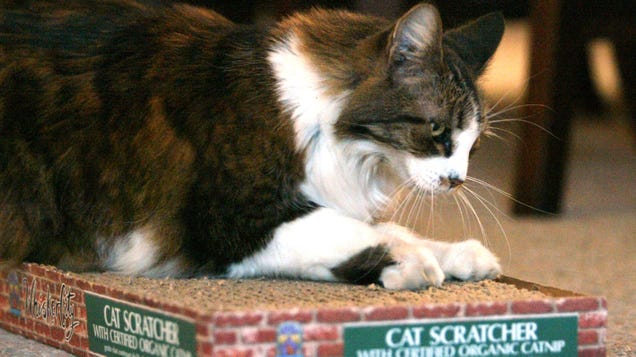Scientists are working hard to solve one of life’s greatest problems: a house cat with a bad habit of tearing up the furniture.
The New Beats Pills Are Finally Here
In a new study Wednesday, researchers have identified several key factors that appear to predict unwanted cat scratching. These include having young kids in the house, the kind of playtime they get, and their overall level of stress. At least some of these aspects can be tweaked to keep your cat’s clawing in check, the scientists say.
The study was conducted by veterinary scientists from Turkey, Portugal, and France; it was also funded by the French animal health company Ceva Santé Animale. The team had over 1,200 cat owners in France fill out an online survey, which included questions about their cat’s home environment, daily routine, and scratching behaviors.
Overall, the team found that some cats were naturally more prone to scratching, such as felines that were described as “aggressive” or “disruptive” by their owners. But there were other outside components linked to unwanted cat scratching, particularly having kids at home, playing with the cat for long periods of time, and generally being more active at night.

Cheddar ‘Chiz’ Cara, noted cat and non-problematic scratcher.Photo: Ed Cara
“It underscores the multifaceted nature of undesirable scratching behavior and emphasizes the importance of comprehensively understanding both the individual characteristics of the cat and its environment to effectively address this behavior,” the researchers wrote about their findings, published Wednesday in Frontiers in Veterinary Science.
Obviously, having young kids or a grouchier cat aren’t things that owners can change on a whim. But some things identified by the team point to stress as a major external factor for cat scratching that can be better managed. Too much playtime at once, for example, can become overly stimulating for a cat. Added stress could also explain why having kids around is linked to cat scratching as well, though the scientists say more research is needed to know for certain.
So finding ways to reduce your cat’s stress should then help cut down on their unwanted scratching, they say. This can include making sure your cat has plenty of nooks and crannies to relax in without being disturbed, as well as high spots from which they can perch and observe their kingdom. You might want to also space out your playtime into short bursts of activity that more mimic natural hunting behavior. And from the survey data, the team found that leaving out scratching posts in places that cats visit frequently seemed to help keep them from clawing other more precious furniture.
“Our findings can help caregivers manage and redirect scratching to appropriate materials, which could help foster a more harmonious living environment for both cats and their caregivers,” said lead author Yasemin Salgirli Demi̇rbas, a veterinary researcher at Ankara University, in a statement from Frontiers, publishers of the journal.
Implementing these findings could protect your favorite possessions. Just don’t let your cat catch you reading this—unless you’re ready to explain why their favorite sofa is suddenly off-limits.
>>> Read full article>>>
Copyright for syndicated content belongs to the linked Source : Gizmodo – https://gizmodo.com/stop-cat-scratching-furniture-science-backed-strategies-1851572515































